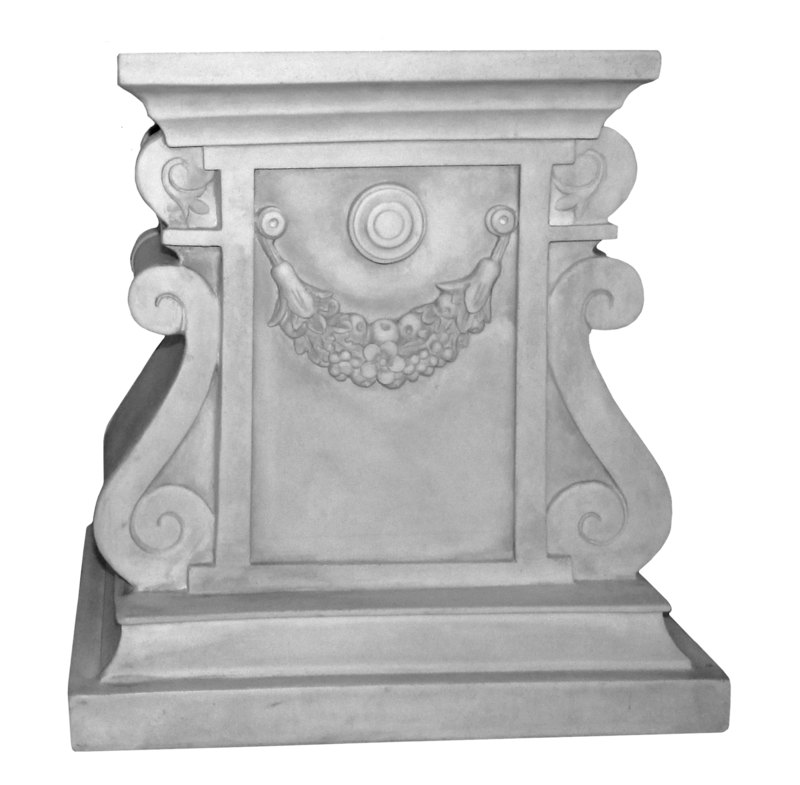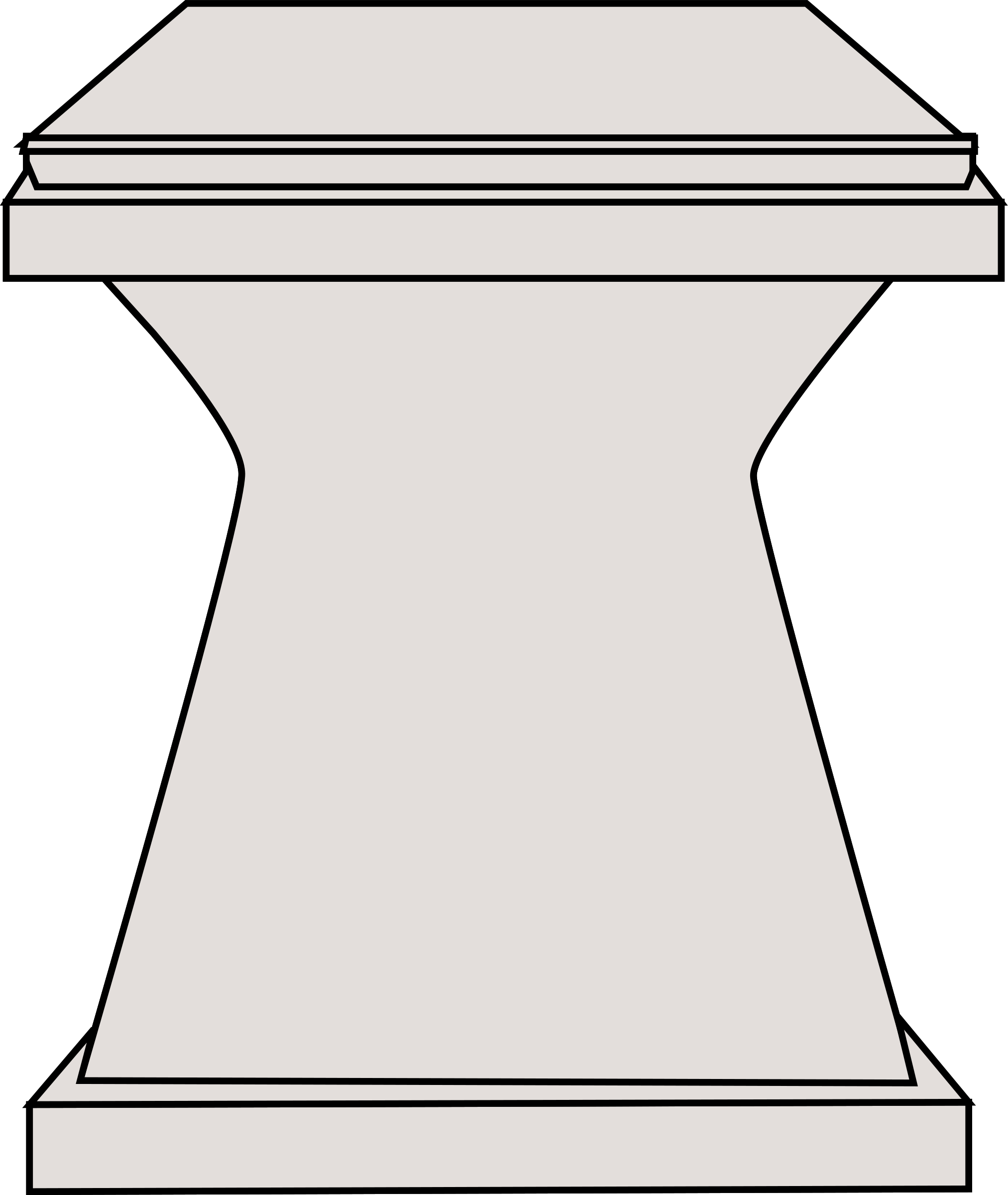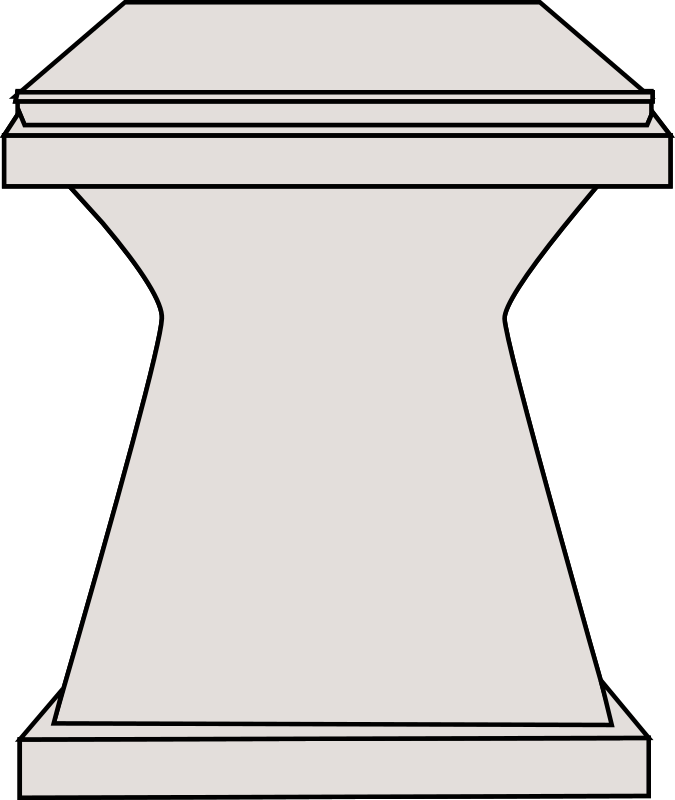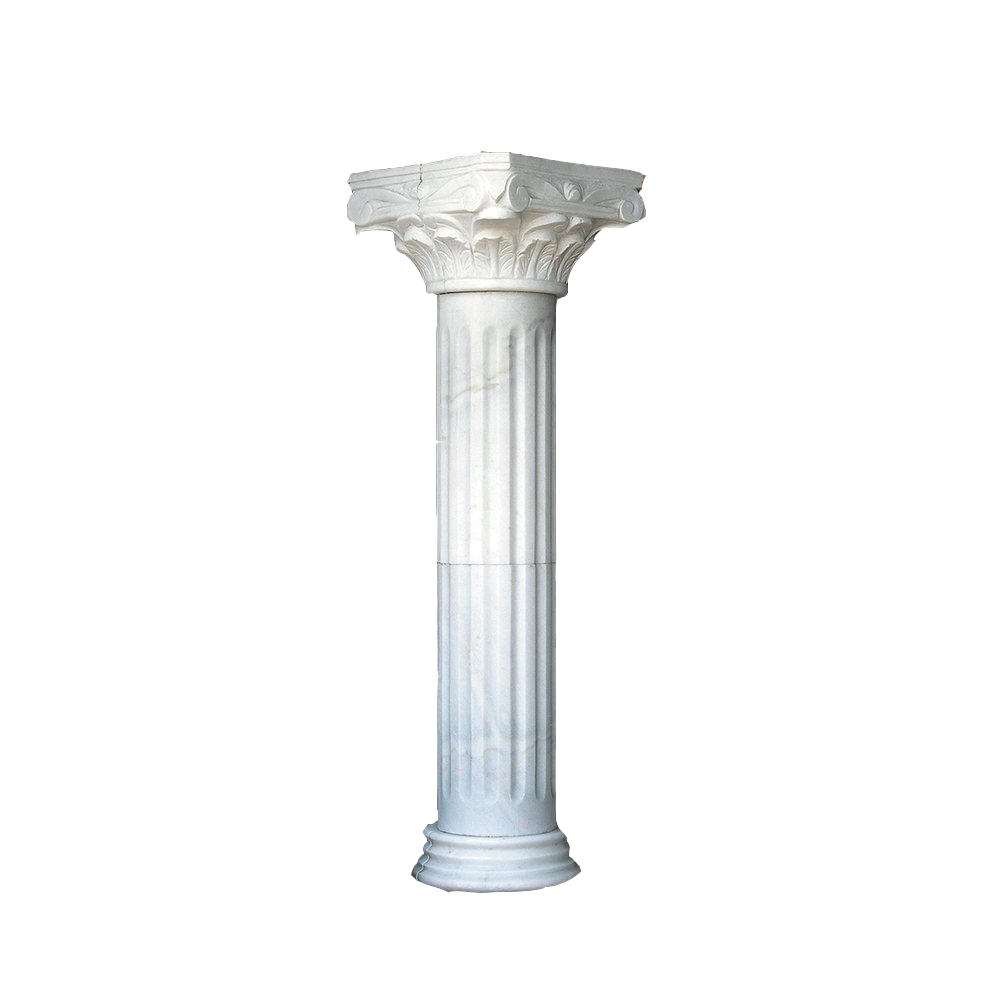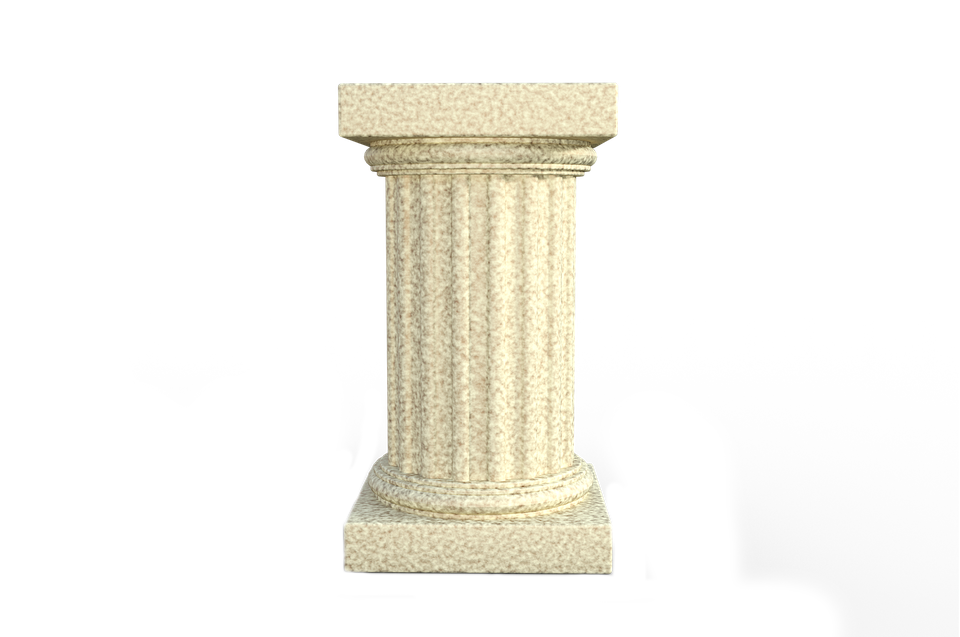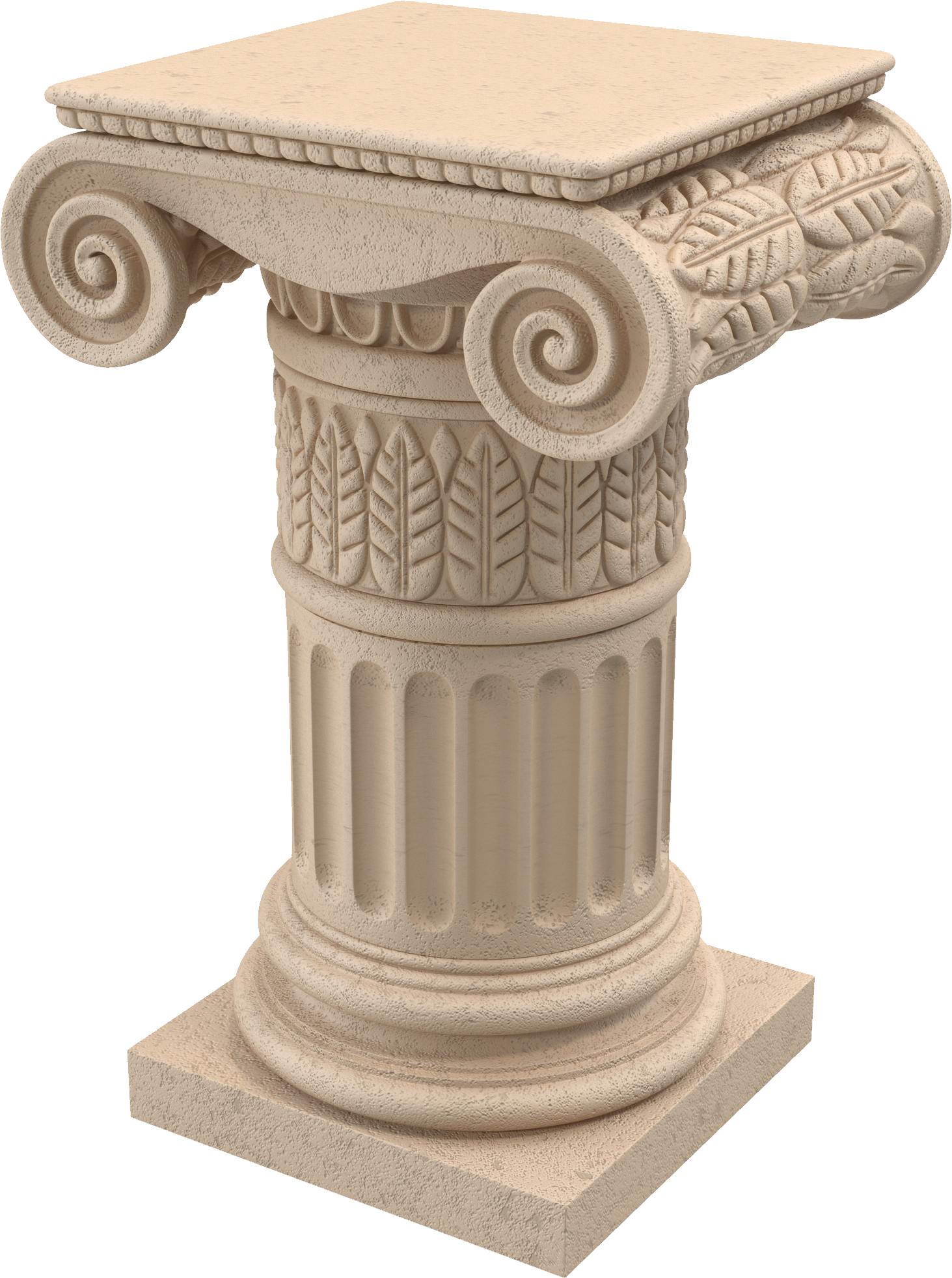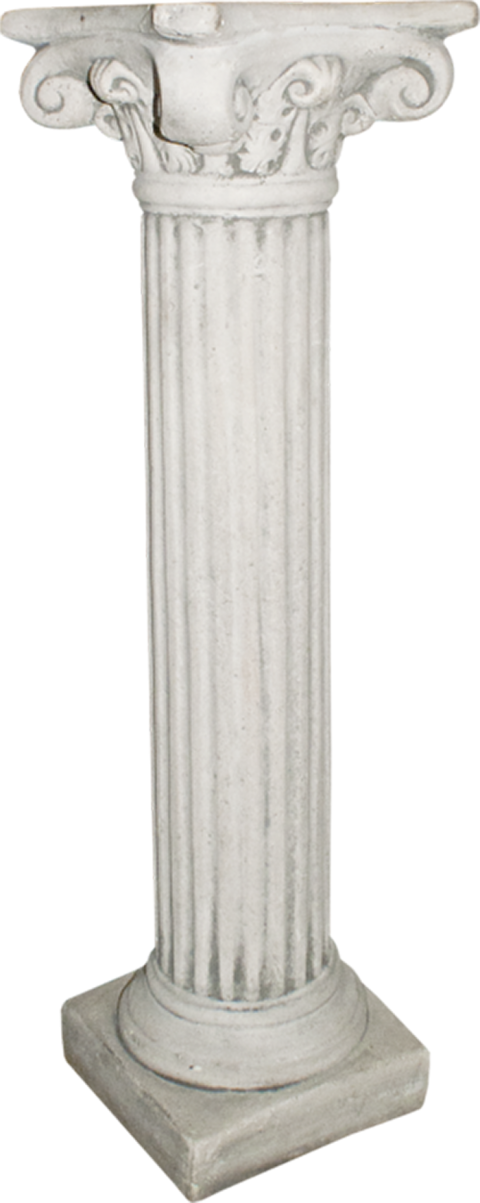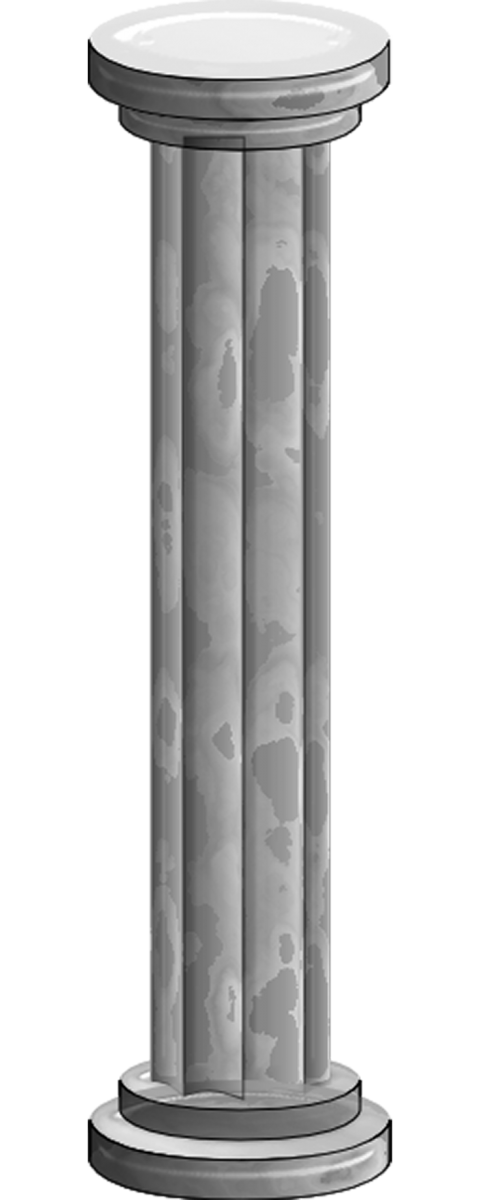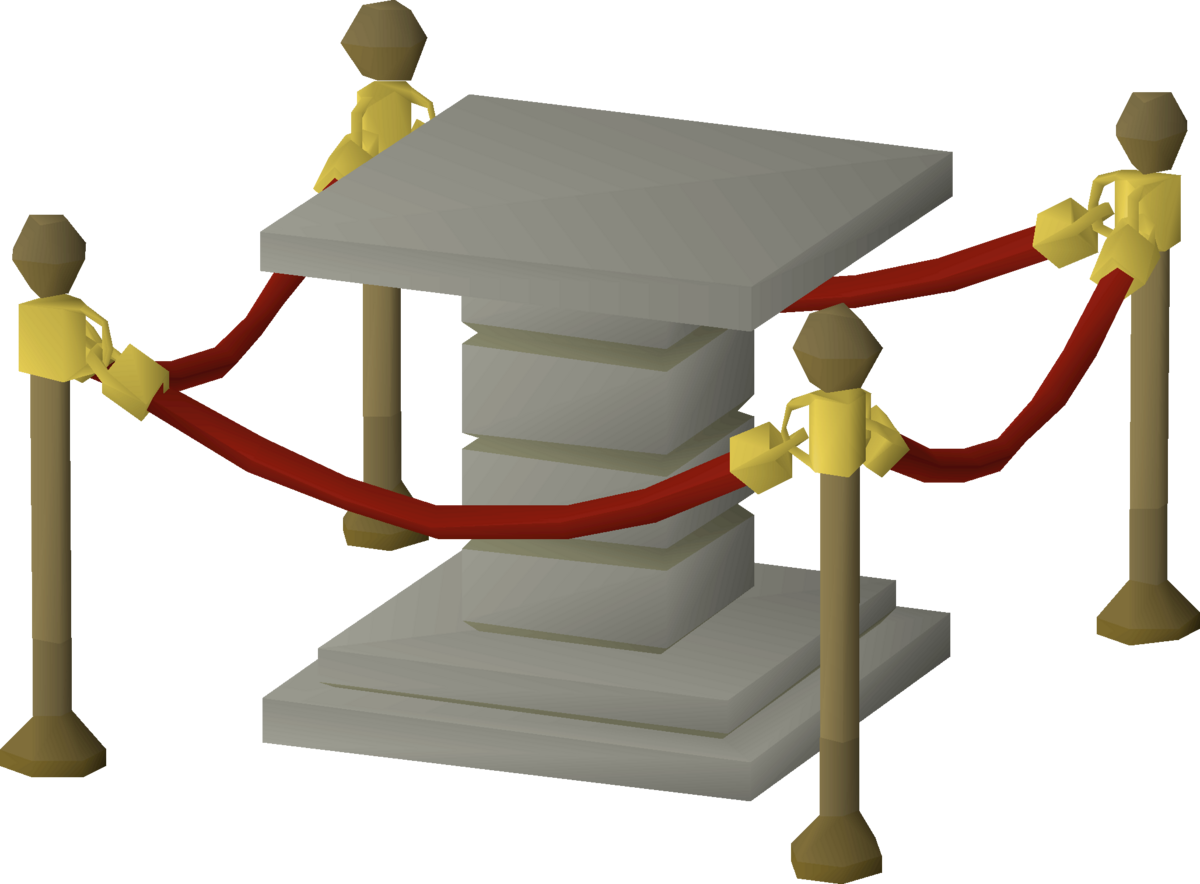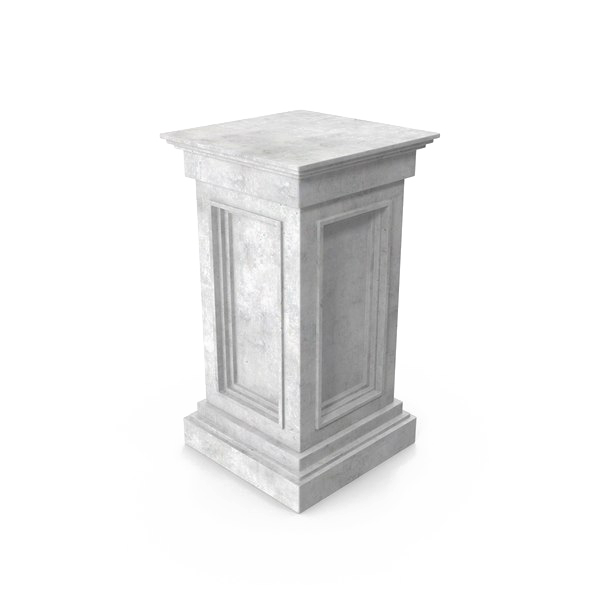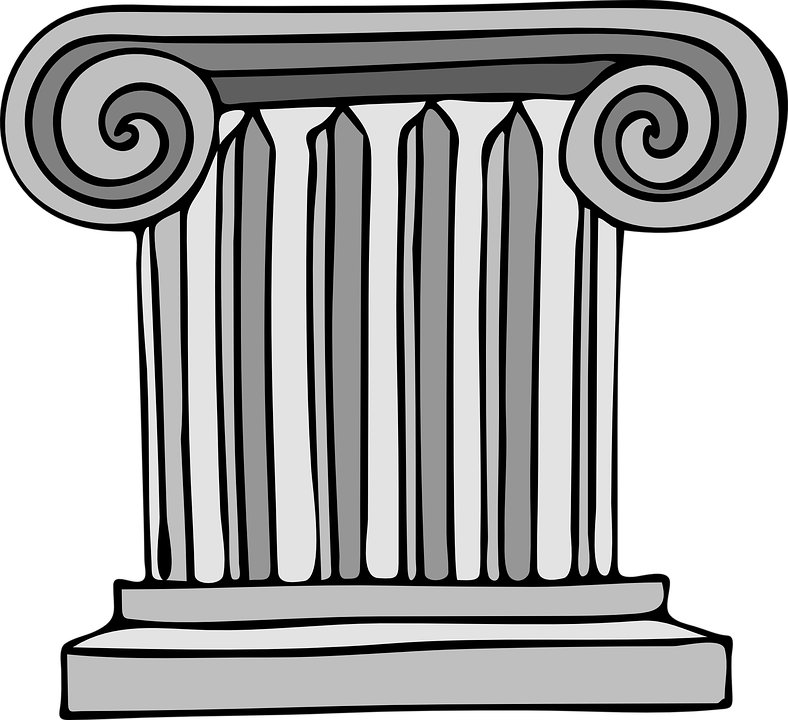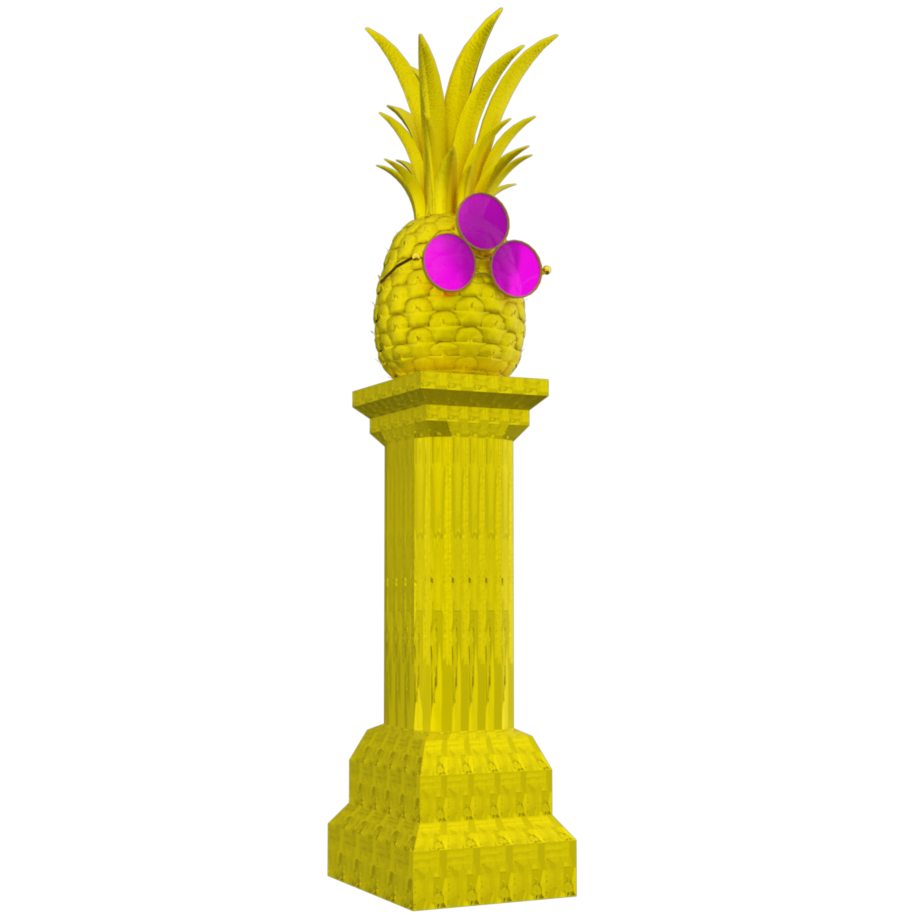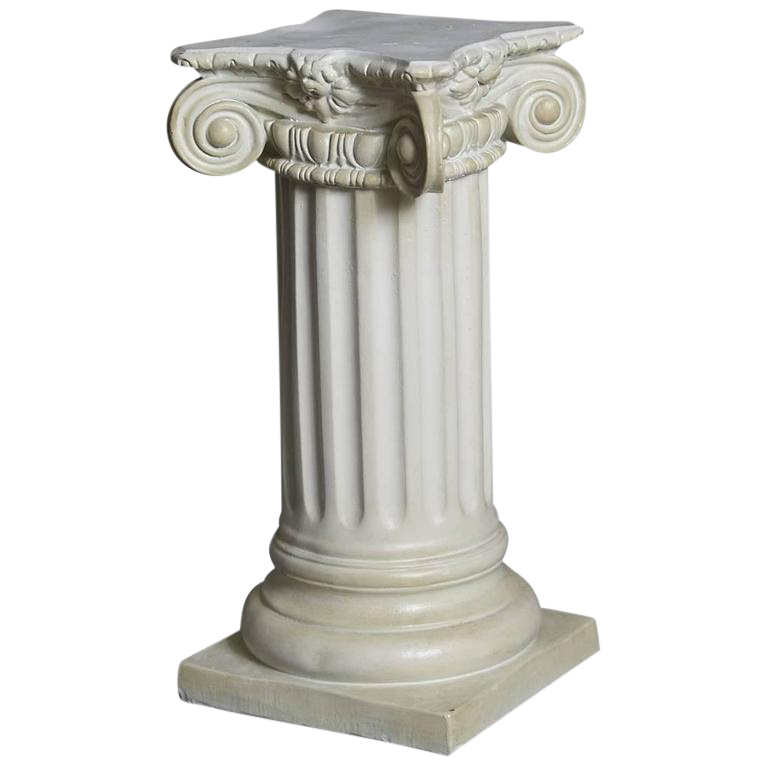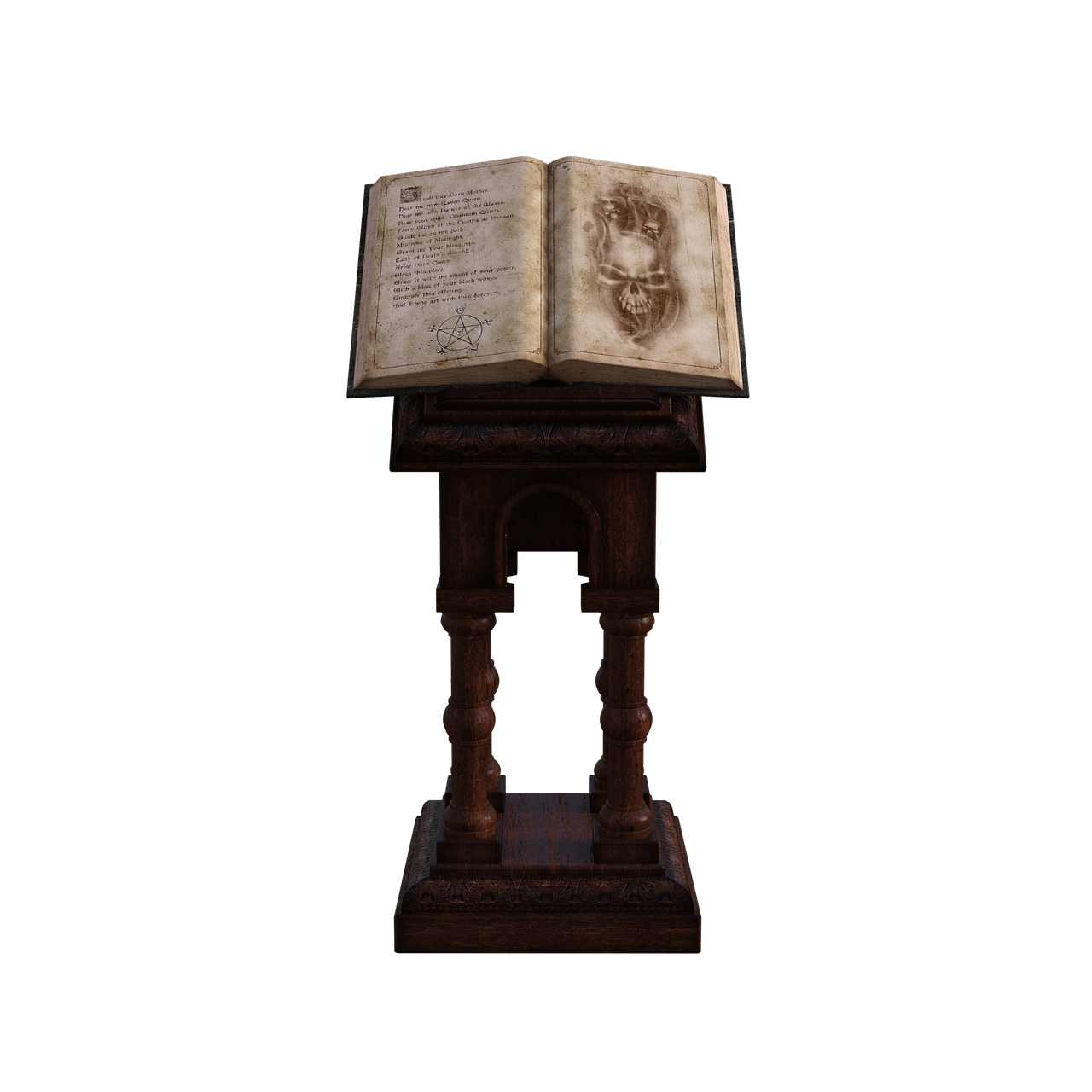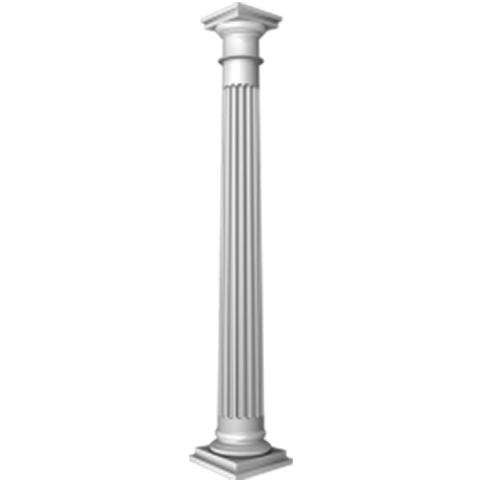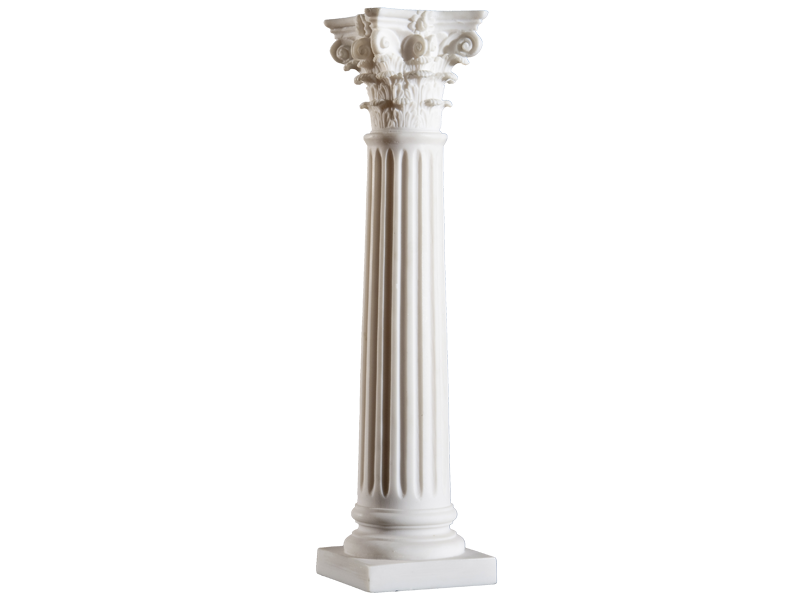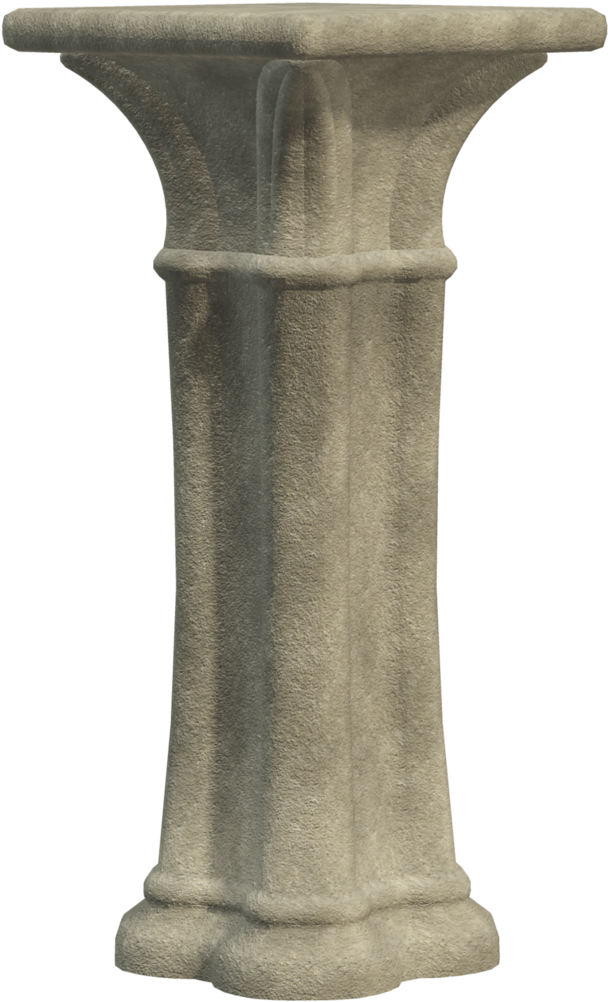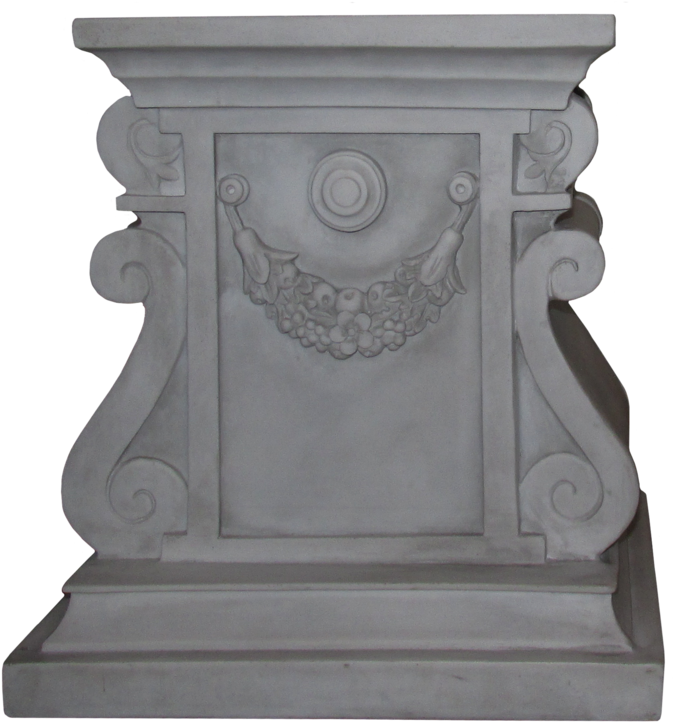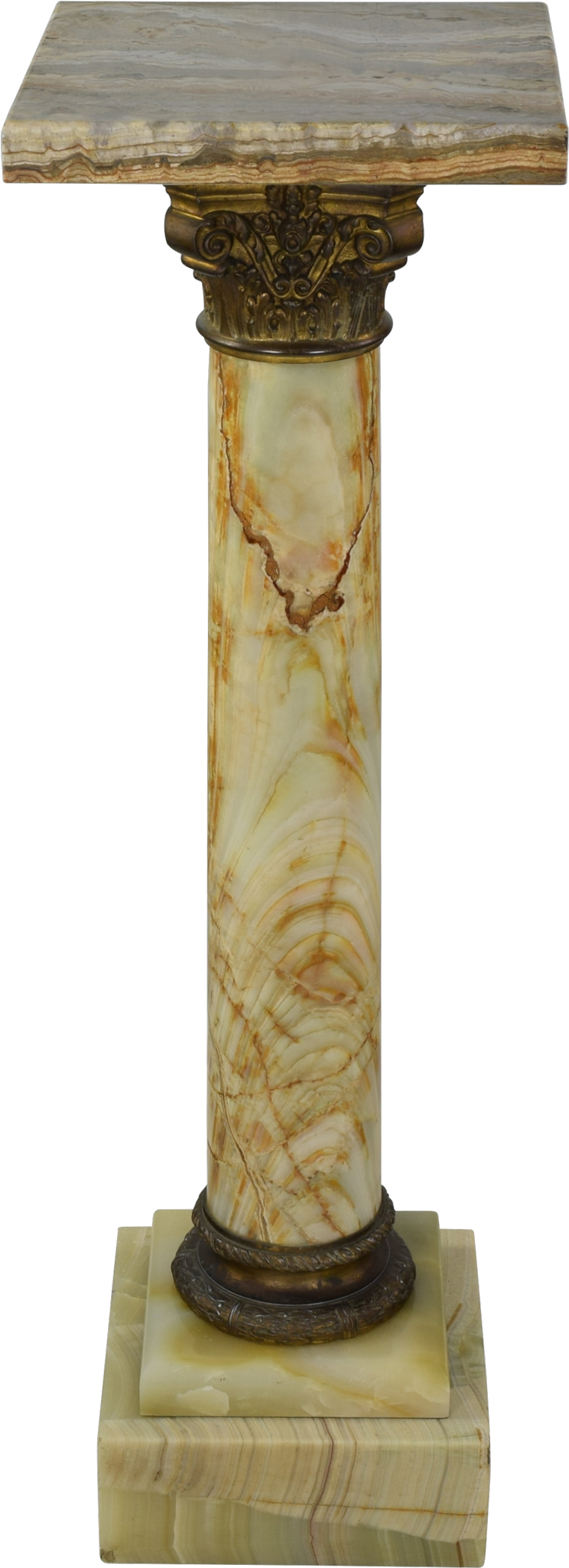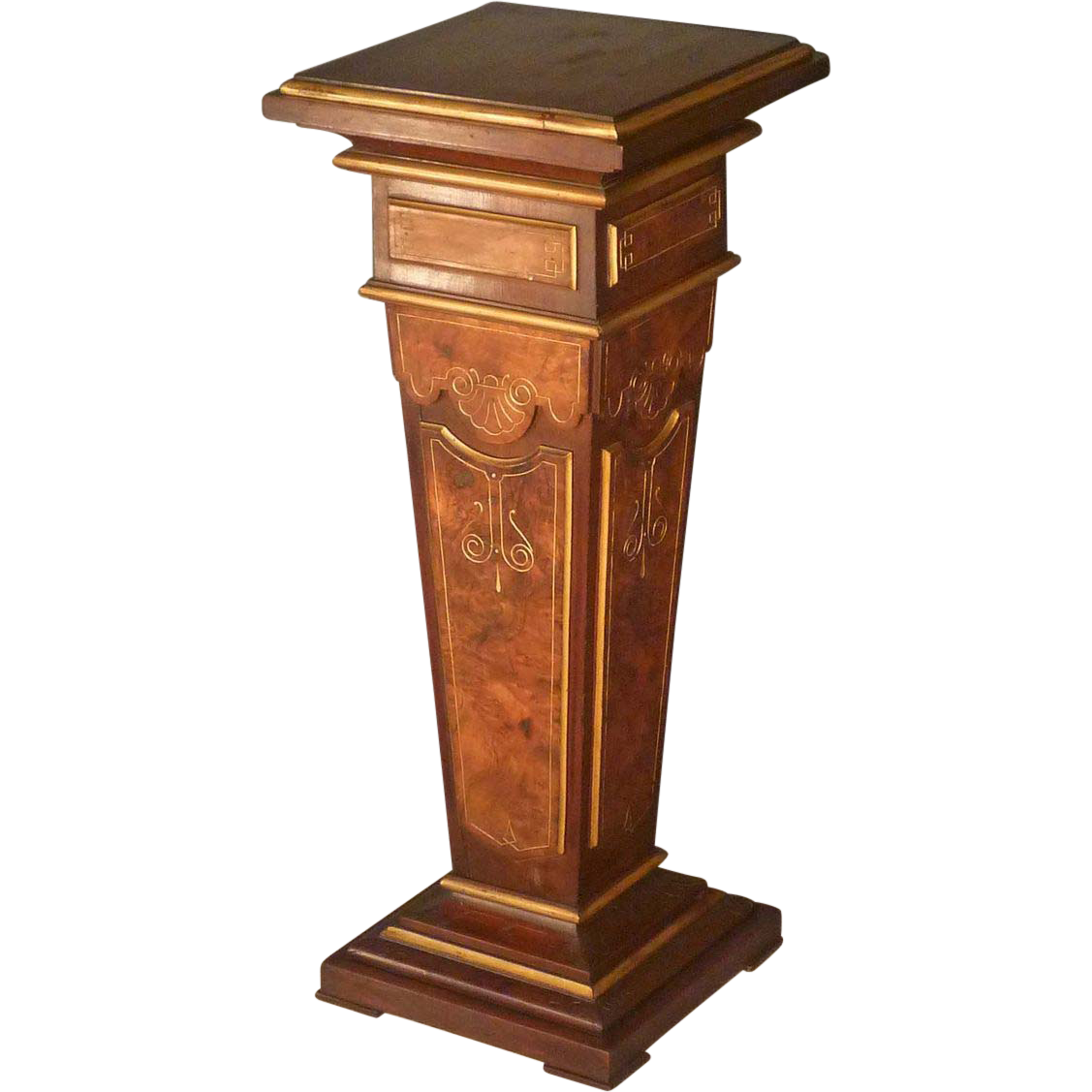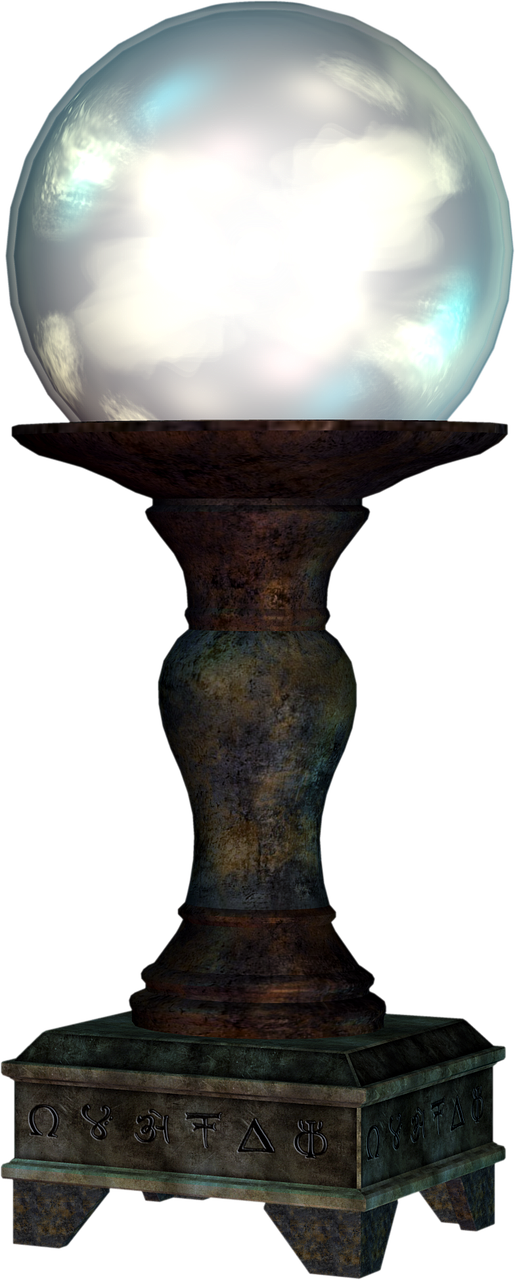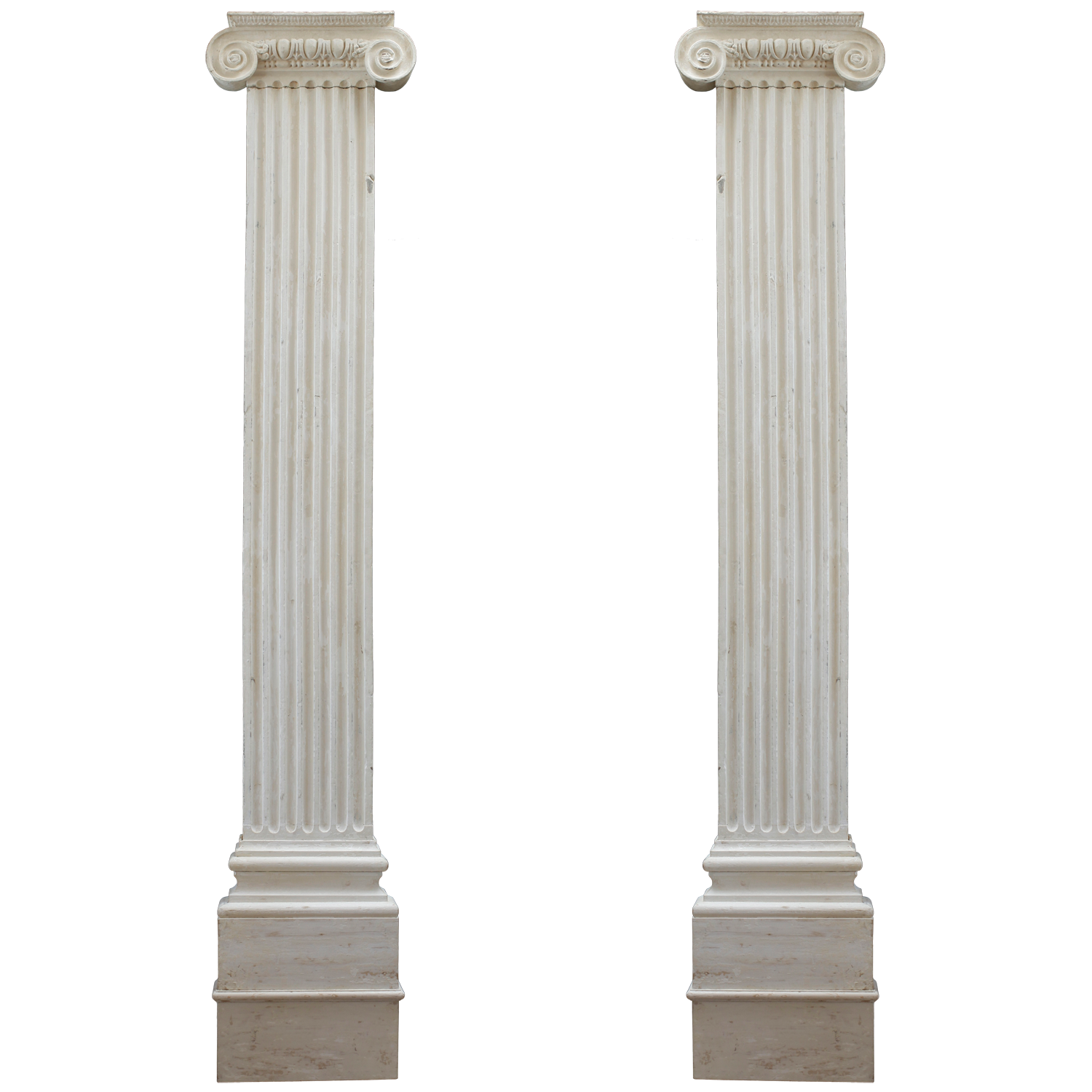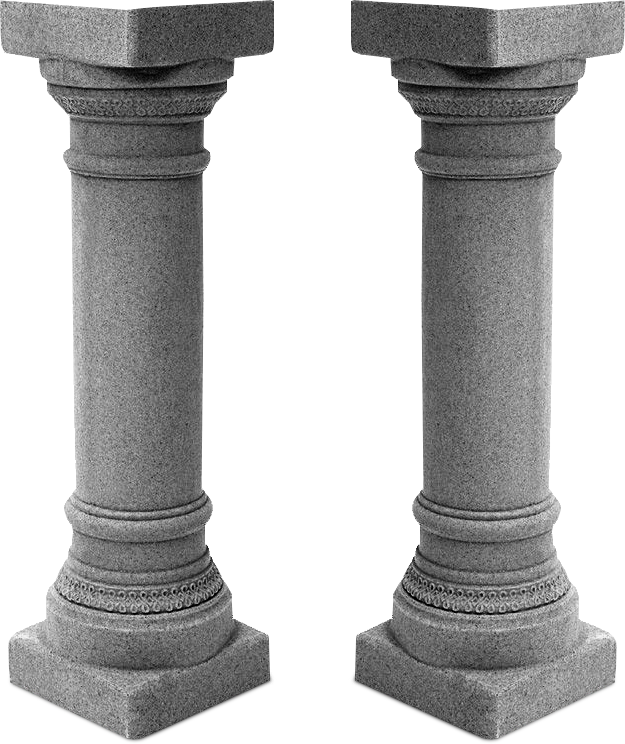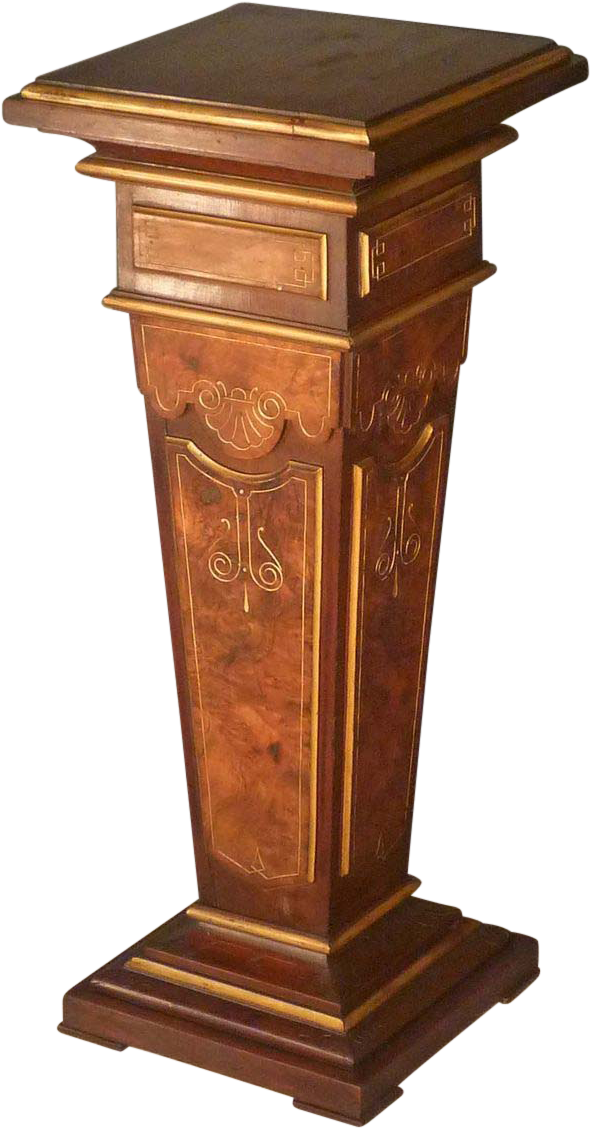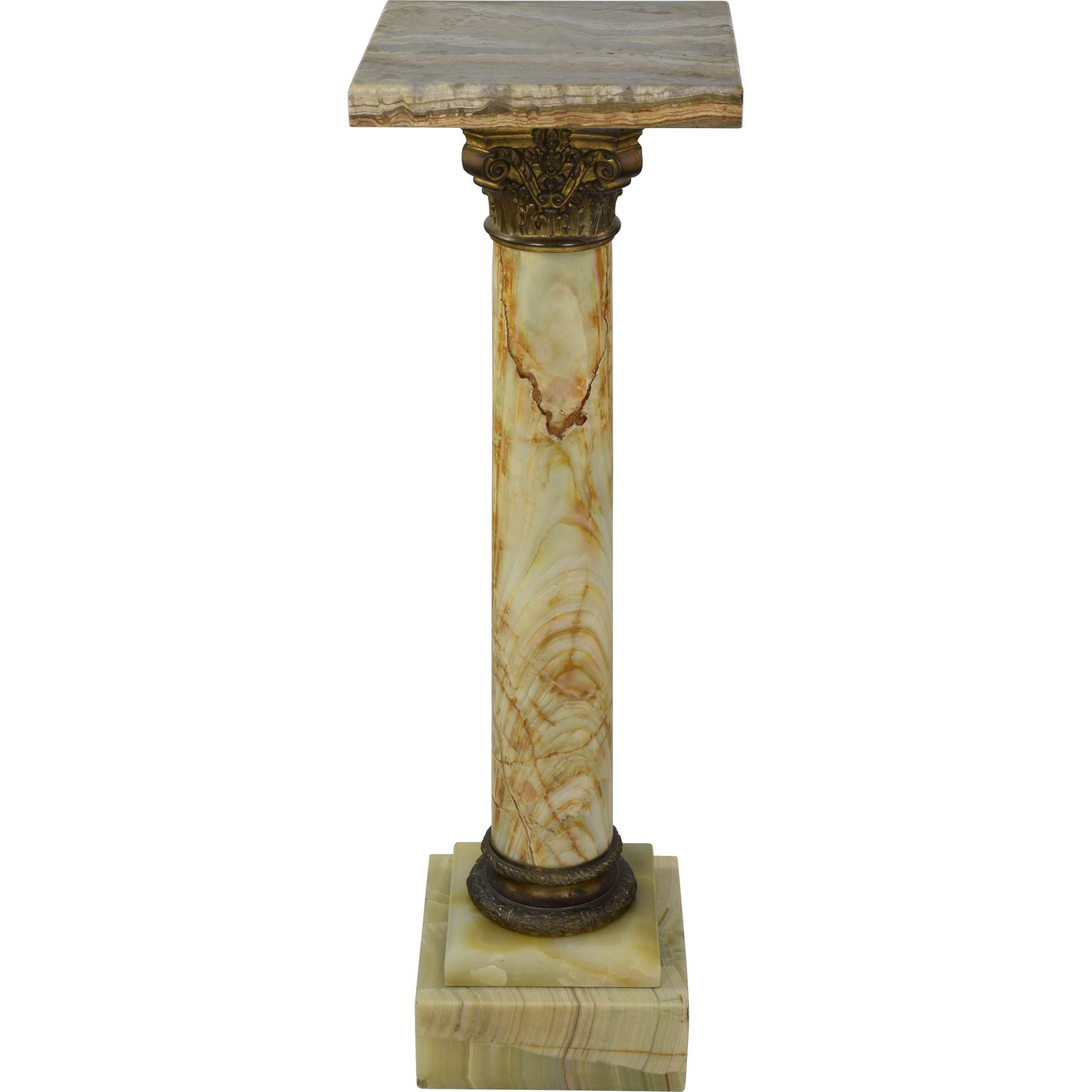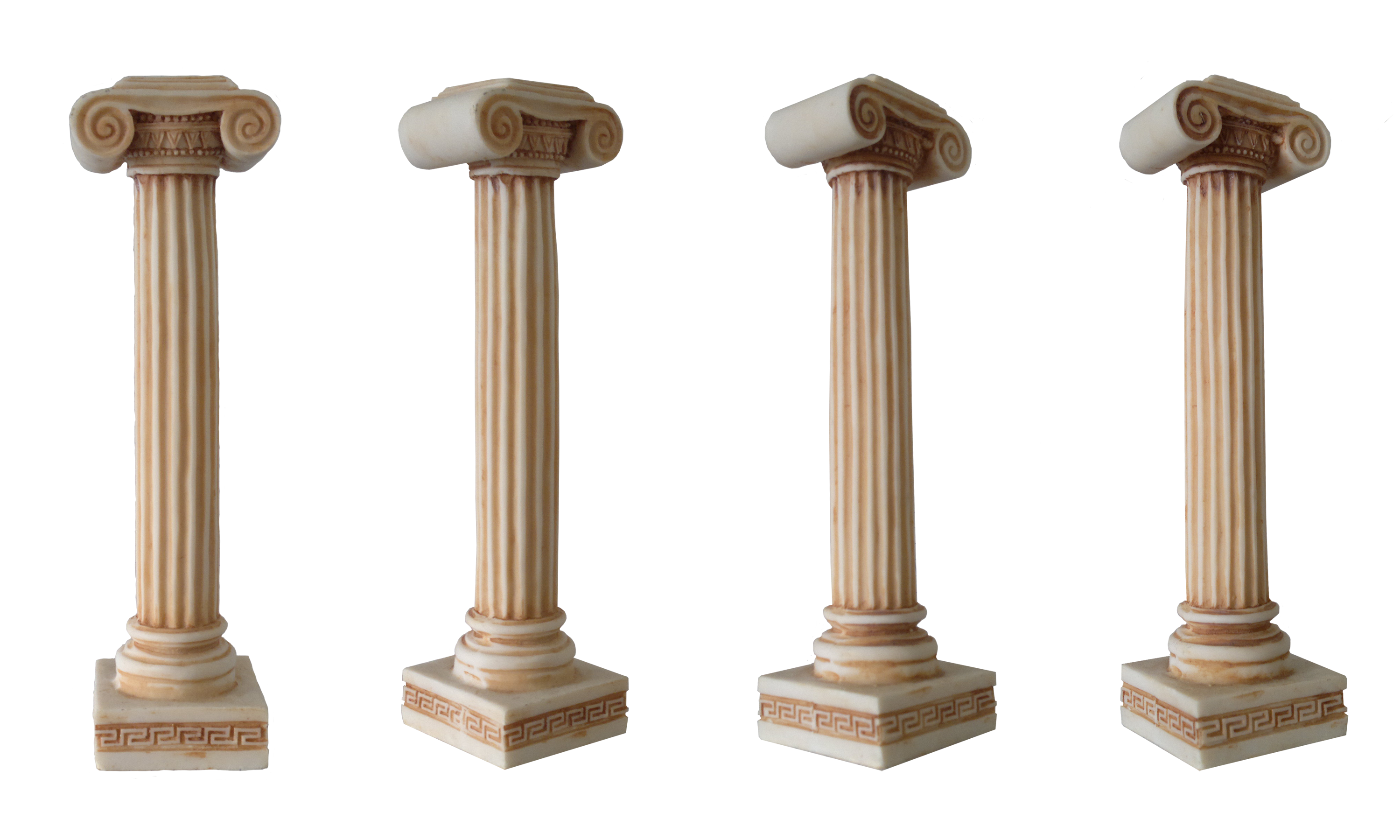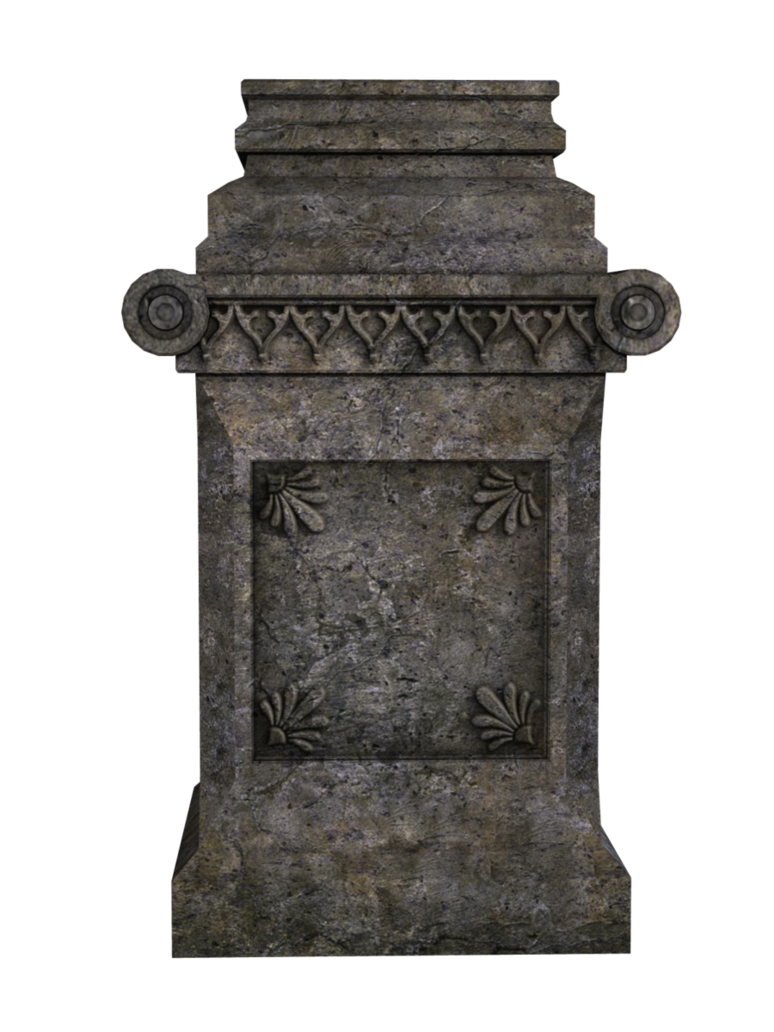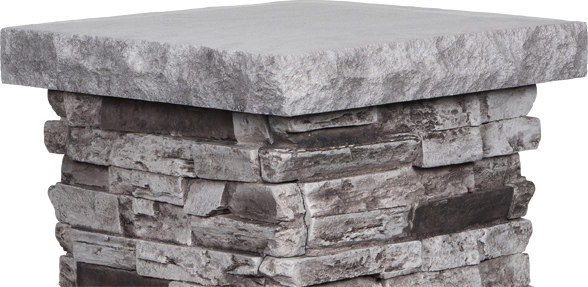Download top and best high-quality free Pedestal PNG Transparent Images backgrounds available in various sizes. To view the full PNG size resolution click on any of the below image thumbnail.
License Info: Creative Commons 4.0 BY-NC
In architecture, a pedestal or plinth supports a statue or vase, as well as a column. Socles are smaller pedestals, especially those that are spherical in form. Basement is another name for it in civil engineering. The plinth’s minimum height is normally fixed at 45 cm (for buildings). It works as a retaining wall for the filling inside the plinth or raised floor, transmitting loads from the superstructure to the foundation.
An acropodium is an elevated pedestal or plinth that supports a statue and is elevated from the substructure supporting it (usually roofs or corniches). The phrase comes from the Greek words o ákros ‘topmost’ and pos (root – pod-) ‘foot.’
Although the Romans occasionally raised the columns of their temples or propylaea on square pedestals in Syria, Asia Minor, and Tunisia, they were only used in Rome to give greater prominence to isolated columns, such as those of Trajan and Antoninus, or as a podium to the decorative columns used in the Roman triumphal arches.
The Italian Renaissance architects, on the other hand, believed that no order was complete without a pedestal, and because the orders were used to divide and decorate a building into several stories, the cornice of the pedestal was carried through and formed the sills of their windows, or the balustrade of the arcade in open arcades around a court. They also appear to have considered that the pedestal’s height should be proportional to the height of the column or pilaster it supported; thus, in the church of Saint John Lateran, where the applied order is of considerable size, the pedestal is 13 feet (4.0 m) high rather than the usual 3 to 5 feet (1.5 m).
A lotus throne is a stylised lotus blossom used as a seat or platform for a person in Asian art. In Buddhist and Hindu art, as well as Jain art, it is the standard pedestal for celestial figures. It originated in Indian art and spread throughout the world, particularly to East Asia, thanks to Indian religions.
The pedestal for prominent stele, especially those linked with emperors, in imperial China was customarily a stone tortoise called bixi. The highest nobility (those of the gong and hou ranks) and officials of the top three ranks were eligible for bixi-based funerary tablets, while lower-level mandarins’ steles were to stand on simple rectangular pedestals, according to the 1396 version of the regulations issued by the Ming Dynasty founder, the Hongwu Emperor.
Download Pedestal PNG images transparent gallery
- Pedestal Modern PNG Image
Resolution: 800 × 785
Size: 245 KB
Image Format: .png
Download
- Pedestal Modern PNG Photo
Resolution: 2025 × 2400
Size: 79 KB
Image Format: .png
Download
- Pedestal Modern PNG Cutout
Resolution: 455 × 908
Size: 22 KB
Image Format: .png
Download
- Pedestal Modern PNG Images
Resolution: 675 × 800
Size: 20 KB
Image Format: .png
Download
- Pedestal PNG Pic
Resolution: 1565 × 1920
Size: 130 KB
Image Format: .png
Download
- Pedestal PNG File
Resolution: 512 × 512
Size: 6 KB
Image Format: .png
Download
- Pedestal PNG Image
Resolution: 1000 × 1000
Size: 165 KB
Image Format: .png
Download
- Pedestal PNG Photo
Resolution: 512 × 512
Size: 7 KB
Image Format: .png
Download
- Pedestal PNG Cutout
Resolution: 960 × 637
Size: 279 KB
Image Format: .png
Download
- Pedestal PNG Images
Resolution: 1463 × 1963
Size: 2532 KB
Image Format: .png
Download
- Pedestal PNG Photos
Resolution: 480 × 1203
Size: 390 KB
Image Format: .png
Download
- Pedestal Transparent
Resolution: 480 × 1200
Size: 143 KB
Image Format: .png
Download
- Pedestal PNG Clipart
Resolution: 1200 × 884
Size: 230 KB
Image Format: .png
Download
- Pedestal PNG Picture
Resolution: 600 × 600
Size: 122 KB
Image Format: .png
Download
- Pedestal PNG HD Image
Resolution: 788 × 720
Size: 97 KB
Image Format: .png
Download
- Pedestal PNG Image HD
Resolution: 909 × 919
Size: 227 KB
Image Format: .png
Download
- Pedestal No Background
Resolution: 768 × 768
Size: 228 KB
Image Format: .png
Download
- Pedestal PNG Images HD
Resolution: 1280 × 1280
Size: 587 KB
Image Format: .png
Download
- Pedestal PNG Free Image
Resolution: 480 × 480
Size: 26 KB
Image Format: .png
Download
- Pedestal Column
Resolution: 800 × 600
Size: 94 KB
Image Format: .png
Download
- Pedestal Column PNG
Resolution: 608 × 1002
Size: 683 KB
Image Format: .png
Download
- Pedestal Column PNG Pic
Resolution: 673 × 722
Size: 699 KB
Image Format: .png
Download
- Pedestal Column PNG File
Resolution: 744 × 2049
Size: 1670 KB
Image Format: .png
Download
- Pedestal Column PNG Image
Resolution: 1127 × 1127
Size: 734 KB
Image Format: .png
Download
- Pedestal Column PNG Photo
Resolution: 515 × 1280
Size: 710 KB
Image Format: .png
Download
- Pedestal Column PNG Cutout
Resolution: 1500 × 1500
Size: 936 KB
Image Format: .png
Download
- Pedestal Column PNG Images
Resolution: 625 × 744
Size: 331 KB
Image Format: .png
Download
- Pedestal Modern PNG Photos
Resolution: 590 × 1128
Size: 931 KB
Image Format: .png
Download
- Pedestal Modern
Resolution: 2048 × 2048
Size: 1165 KB
Image Format: .png
Download
- Pedestal Modern PNG
Resolution: 3000 × 1800
Size: 2392 KB
Image Format: .png
Download
- Pedestal Modern PNG Pic
Resolution: 774 × 1032
Size: 696 KB
Image Format: .png
Download
- Pedestal
Resolution: 1000 × 1000
Size: 247 KB
Image Format: .png
Download
- Pedestal PNG
Resolution: 588 × 287
Size: 357 KB
Image Format: .png
Download
- Pedestal Modern PNG File
Resolution: 709 × 800
Size: 41 KB
Image Format: .png
Download
